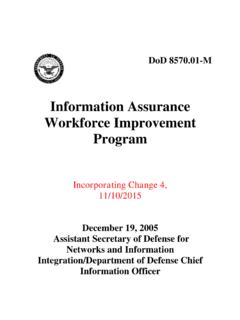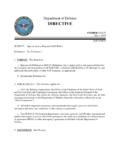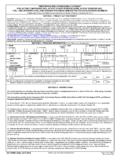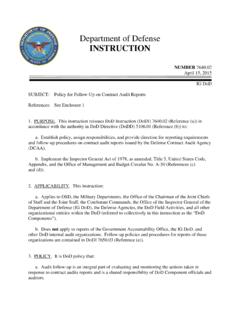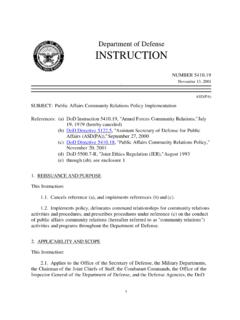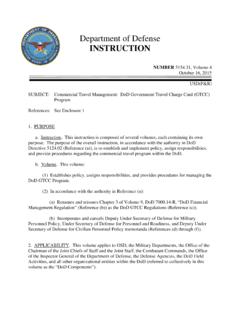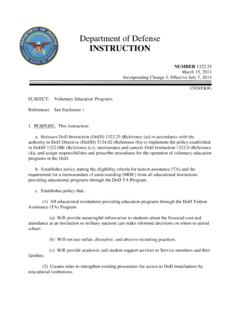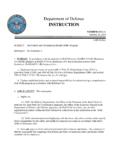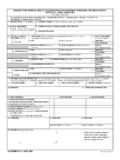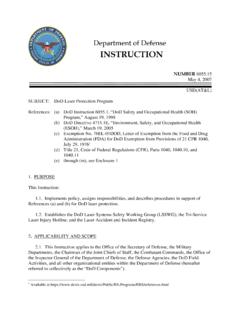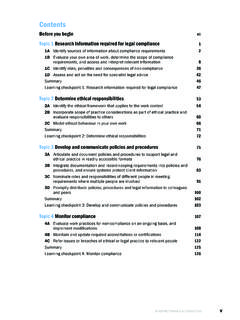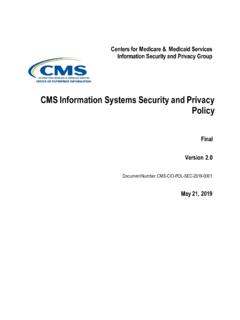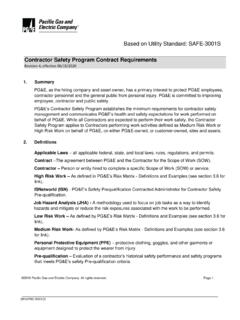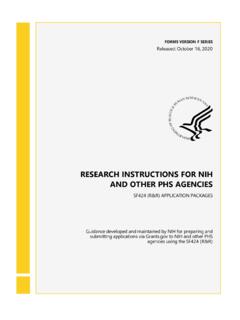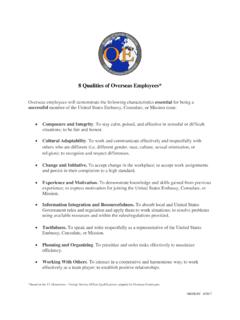Transcription of Department of Defense INSTRUCTION
1 Department of Defense INSTRUCTION NUMBER July 14, 2015 Incorporating Change 1, August 11, 2017 DoD CIO SUBJECT: DoD Privacy Impact Assessment (PIA) Guidance References: See Enclosure 1 This accordance with the authority in DoD Directive (DoDD) (Reference (a)),reissues DoD INSTRUCTION (Reference (b)) to establish policy and assign responsibilities for completion and approval of PIAs. b. Provides procedures for the completion and approval of PIAs in DoD to meet the statutoryrequirement as stated in section 208 of Public Law 107-347 (Reference (c)) to analyze and ensure personally identifiabl e information (PII) in electronic form is collected, stored, protected, used, shared, and managed in a manner that protects privacy. These procedures also support Office of Management and Budget (OMB) Memorandum M-03-22 (Reference (d)).
2 This INSTRUCTION applies to OSD, the Military Departments, the Office ofthe Chairman of the Joint Chiefs of Staff and the Joint Staff, the Combatant Commands, theOffice of the Inspector General of the Department of Defense , the Defense Agencies, the DoDField Activities, and all other organizational entities within the DoD (referred to collectively inthis INSTRUCTION as the DoD Components ). It is DoD policy that PIAs will be:a. Completed on DoD information Technology (IT) and electronic collections that collect ,maintain, use, or disseminate PII to: (1) Ensure PII handling conforms to applicable legal, regulatory, and policyrequirements regarding privacy. (2) Determine the need, privacy risks, and effects of collecting, maintaining, using, anddisseminating PII in electronic form.
3 DoDI , July 14, 2015 Change 1, 08/11/2017 2 (3) Examine and evaluate protections and alternative processes to mitigate potentialprivacy risks. b. Performed when PII about members of the public in accordance with Reference (c), DoDpersonnel, contractors, or foreign nationals employed at military facilities internationally, is collected, maintained, used, or disseminated in electronic form. c. Performed on DoD IT and electronic collections including those supported throughcontracts with external sources that collect , maintain, use, or disseminate PII about members of the public, DoD personnel, contractors, or in some cases foreign nationals. See Enclosure See Enclosure Cleared for public release. This INSTRUCTION is available on the Directives Division Website at OF CHANGE 1.
4 Change updated references and basic administrative changes. DATE. This INSTRUCTION is effective July 14, 1. References2. Responsibilities3. ProceduresGlossary DoDI , July 14, 2015 Change 1, 08/11/2017 3 CONTENTS TABLE OF CONTENTS ENCLOSURE 1: REFERENCES ..4 ENCLOSURE 2: RESPONSIBILITIES ..5 DOD CHIEF information OFFICER (DOD CIO) ..5 DEPUTY CHIEF MANAGEMENT OFFICER OF THE Department OF Defense (DCMO) ..5 GENERAL COUNSEL OF THE Department OF Defense ..5 DOD COMPONENT HEADS ..5 ENCLOSURE 3: PROCEDURES ..7 DETERMINATION OF NEED ..7 PIA COMPLETION AND PUBLISHING ..9 SUBMISSION ..9 REVIEW AND UPDATE CYCLE ..10 GLOSSARY ..11 PART I: ABBREVIATIONS AND ACRONYMS ..11 PART II: DEFINITIONS ..11 DoDI , July 14, 2015 Change 1, 08/11/2017 4 ENCLOSURE 1 ENCLOSURE 1 REFERENCES (a) DoD Directive , DoD Chief information Officer (DoD CIO), November 21, 2014 (b) DoD INSTRUCTION , DoD Privacy Impact Assessment (PIA) Guidance, February 12, 2009 (hereby canceled) (c) Section 208 of Public Law 107-347, E-Government Act of 2002, December 17, 2002 (d) Office of Management and Budget Memorandum M-03-22, OMB Guidance for Implementing the Privacy Provisions of the E-Government Act of 2002, September 26, 2003 (e) DoD Directive , DoD Privacy Program, October 29, 2014 (f) Office of Management and Budget Memorandum M-10-23, Guidance for Agency Use of Third-Party Websites and Applications, June 25, 2010 (g)
5 DoD , Department of Defense Privacy Program, May 14, 2007 (h) Title 5, United States Code (i) DoD INSTRUCTION , DoD Records Management Program, February 24, 2015 (j) DoD INSTRUCTION , Cybersecurity, March 14, 2014 (k) Committee on National Security Systems INSTRUCTION Number 4009, National information Assurance (IA) Glossary, current edition DoDI , July 14, 2015 Change 1, 08/11/2017 5 ENCLOSURE 2 ENCLOSURE 2 RESPONSIBILITIES 1. DOD CHIEF information OFFICER (DOD CIO). The DoD CIO: a. Serves as the DoD principal point of contact for IT matters relating to DoD PIAs. b. Establishes policy and provides DoD-wide guidance with respect to conducting, reviewing, and publishing PIAs. c. Maintains a DoD website that enables public access to approved PIAs or summary PIAs.
6 D. Collects and provides pertinent information to compile congressional and OMB reports. e. Reports PIA statistical information to the DoD senior agency official for privacy for inclusion in the annual report to OMB. f. Submits DoD CIO approved PIAs to OMB, as required. 2. DEPUTY CHIEF MANAGEMENT OFFICER (DCMO). As the senior agency official for privacy, in accordance with DoDD (Reference (e)), the DCMO: a. Serves as the DoD principal point of contact for privacy policies. b. Provides advice and assistance on privacy matters impacting DoD PIAs. c. Maintains a DoD privacy public website that contains a link to DoD CIO PIA information . 3. GENERAL COUNSEL OF THE Department OF Defense . The General Counsel of the Department of Defense will provide advice and assistance on all legal matters arising out of, or incident to, the administration of PIAs.
7 4. DOD COMPONENT HEADS. The DoD Component heads: a. Ensure the DoD Component chief information officers (CIOs) and privacy officials comply with this INSTRUCTION . b. Establish necessary policies and procedures to implement this INSTRUCTION . c. Ensure the DoD Components adhere to the PIA requirements prescribed in References (c) and (d) and the DoD-specific requirements in this INSTRUCTION . DoDI , July 14, 2015 Change 1, 08/11/2017 6 ENCLOSURE 2 d. Minimize the collection and use of PII to the extent practicable as set out in Reference (e). e. Oversee the DoD Component CIOs. The DoD Component CIOs: (1) Serve as the DoD Component PIA approval officials. (2) Ensure PIAs are completed according to the guidance provided in this INSTRUCTION . (3) Ensure PIA coordination between the office submitting the PIA request and DoD Component cybersecurity and privacy officials.
8 DoDI , July 14, 2015 Change 1, 08/11/2017 7 ENCLOSURE 3 ENCLOSURE 3 PROCEDURES 1. DETERMINATION OF NEED. The program manager or designee will review the DoD IT or electroni c collection to determine if PII is collected, maintained, used, or disseminated about members of the public, DoD personnel, contractors, or foreign nationals employed at military facilities internationally. a. If PII is collected, a PIA is required for: (1) Existing DoD information systems and electronic collections for which a PIA has not previously been completed, including systems that collect PII about DoD personnel and contractors. (2) In accordance with Reference (d), new IT, or electronic collections: (a) Before developing, purchasing, or contracting new information systems or electronic collections; (b) When converting paper-based records to electronic systems; or (c) When functions applied to existing information collection change anonymous information into PII.
9 (3) DoD IT or electronic collections with a completed PIA, when change creates new privacy risks, including the examples stated in paragraphs 1a(3)(a) through 1a(3)(f). (a) Significant System Management Changes. When new uses of an existing IT system, including application of new technologies, significantly change how PII is managed in the system. For example, when an agency employs new relational database technologies or Web-based processing to access multiple data stores, such additions could create a more open environment and avenues for exposure of data that previously did not exist. (b) Significant Merging. When agencies adopt or alter business processes so that government databases holding PII are merged, centralized, matched with other databases, or otherwise significantly manipulated.
10 For example, when databases are merged to create one central source of information , such a link may aggregate data in ways that create privacy concerns not previously at issue. (c) New Public Access. When user-authenticating technology ( , password, digital certificate, biometric) is newly applied to an electronic information system accessed by members of the public. DoDI , July 14, 2015 Change 1, 08/11/2017 8 ENCLOSURE 3 (d) Commercial Sources. When agencies systematically incorporate into existing IT systems databases of PII purchased or obtained from commercial or public sources. Merely querying such a source on an ad hoc basis using existing technology does not trigger the PIA requirement. (e) New Interagency Uses. When federal agencies work together on shared functions involving significant new uses or exchanges of PII, such as the cross-cutting E-Government initiatives.
